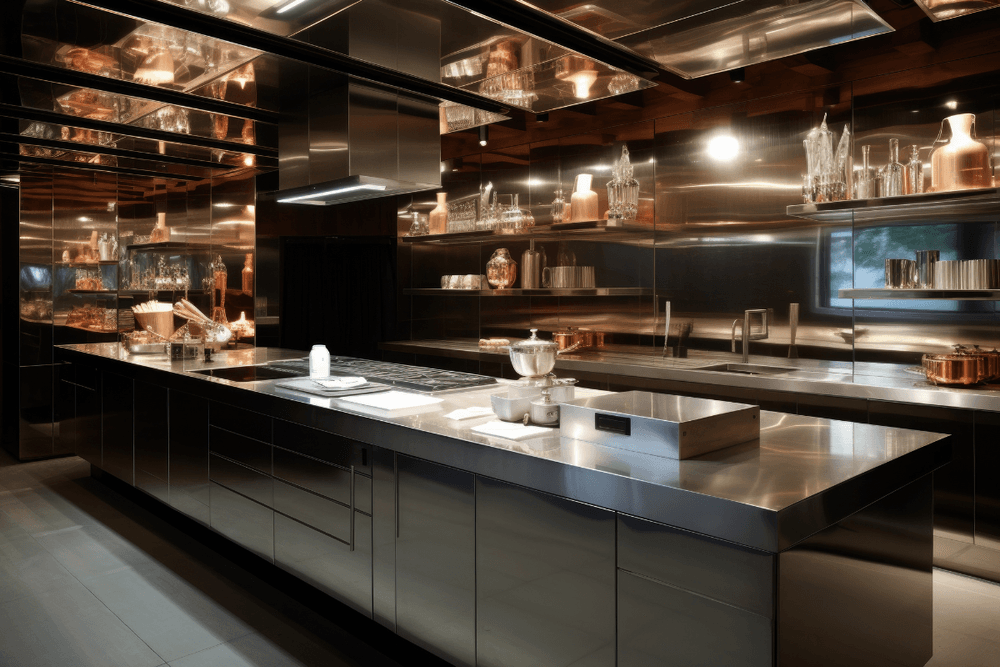“How to find the ideal commercial kitchen for rent or license near me”?: Everything food entrepreneurs need to know
Table of Contents
CloudKitchens
How many tacos can be delivered from a 1000sqft restaurant?
The same amount as a 200sqft ghost kitchen.
For today’s culinary entrepreneurs, the right commercial kitchen space represents more than just a cooking area , but it is the foundation of operational efficiency, food safety, and scalable growth.
Whether launching a catering business, scaling a delivery brand, or expanding production, securing a commercial kitchen for rent near to you is often the critical next step. But with countless variables to consider: size, design, equipment, compliance, and more. The search can quickly become overwhelming.
The importance of choosing the right commercial kitchen
Renting or licensing a commercial kitchen isn’t just a matter of finding available space. The right facility can mean the difference between long-term business success and daily struggle. It sets the standard for food safety, staff morale, workflow efficiency, and client satisfaction.
Rushing the process or compromising on essentials can lead to headaches, costly inefficiencies, or even compliance issues down the road.
Read more: How much does it cost to rent a Commercial Kitchen? Everything you need to know!
Questions to answer before renting a commercial kitchen
Before you even tour a space, it’s important to clarify your true needs and expectations. Ask yourself:
- What volume of production do you expect, now and in the future? Factor in current order volume and ambitious growth projections.
- What type of food or product are you producing? Certain menu items require unique kitchen layouts, specialty equipment, or stricter storage control.
- What licenses, permits, and health code requirements apply in your area? Renting or licensing a kitchen that’s already compliant saves time and money.
- When and how often will you use the kitchen? Some businesses need full-time access, others only during peak periods or certain times of day.
- How does location impact your delivery, customer pickup, or supply chain? Proximity to target markets, delivery zones, and suppliers is often critical.
- What is your budget, both for rent and potential extra fees? Consider all costs, not just the monthly rental rate, utilities, maintenance, security, and storage can add up.
- Do you need additional facilities, like cold storage, office space, or event space?
- How important is the kitchen community? Shared spaces may offer networking and learning opportunities, but some businesses require privacy and exclusivity.
Clarifying these questions early will focus your search and make your evaluations far more productive.
What must the kitchen have for you to rent?
A commercial kitchen for rent must provide a core set of features and standards to guarantee safe, efficient, and scalable operations. Here’s what to look for:
1. Licensing and compliance
Rent only kitchens that are fully licensed and regularly pass health inspections. The facility must comply with local, state, and federal regulations for commercial food production, which often includes occupancy limits, food handling protocols, ventilation, and zoning.
2. Adequate space and flexible layout
Size matters: The rule of thumb is at least 5 square feet of kitchen space per expected customer seat, but most commercial kitchens for delivery/catering range from 500 to 1,375 square feet, with an industry average around 1,000 square feet. Consider the total workflow, storage, prep, cooking, plating, packing, and cleaning, and make sure each area is appropriately sized for your headcount and equipment.
3. Essential equipment
Core appliances such as ovens, ranges, prep tables, sinks (hand-wash, mop, and food-safe), refrigeration, and storage must be not only available but well-maintained. Evaluate whether specialty tools you need, blast chillers, mixers, dishwashers, are present or if you’ll provide your own.
4. Storage solutions
Look for secure, conveniently located dry, cold, and frozen storage. Insufficient or poorly organized storage can hinder operations and threaten food safety.
5. Food safety and hygiene protocols
Strict cleaning schedules, clear handwashing stations, pest control, allergen protocols, and temperature monitoring systems are essentials, not options. Confirm protocols for food handling, cleaning, and waste disposal.
Read more: Kitchen Hygiene: rules and good practices to apply in your kitchen
6. Accessibility and logistics
The kitchen’s location should provide easy access for delivery drivers, staff, and suppliers. Loading docks, parking, and clear signage save hours in daily logistics.
7. Security
A secure facility with restricted access ensures the integrity of your business. Cameras, coded entry, and staff onsite add critical peace of mind.
8. Flexibility and scalability
Choose a kitchen that can grow with you. Modular workstations, available larger units, or flexible agreements allow you to adjust space or amenities as you expand
9. Strategic location
Select a kitchen in a location that supports your business goals, whether that means being close to high-demand delivery zones, your target market, or reliable suppliers. A well-chosen location can reduce delivery times, lower transportation costs, and increase your brand’s visibility, making it easier to reach more customers efficiently.
Ensure the facility is accessible for staff, suppliers, and delivery drivers, with adequate parking and entry logistics to support your daily operations and future growth.
Read more: Restaurant location strategy: how to choose the most profitable spot
Red flags and mistakes to avoid when renting a commercial kitchen
Even experienced operators can miss details that derail production. Here are vital mistakes to avoid:
- Ignoring zoning or legal requirements: Ensure the facility has all health permits and complies with local laws, shortcuts create legal and food safety risks.
- Overlooking hidden costs: Ask about extra fees for utilities, cleaning, security, or equipment usage that may not be included in advertised rent.
- Not vetting maintenance standards: Dirty kitchens or poorly maintained equipment are deal breakers; check recent inspection reports.
- Choosing based on price alone: Cheap often means shared, congested, or poorly maintained, prioritizing compliance and efficiency over cost savings.
- Failing to ask about scheduling conflicts: If the kitchen is shared, clarify how scheduling works, especially during peak hours or seasons.
- Neglecting to plan for growth: Choosing a kitchen that can’t expand when you need it most can stunt your business at a critical time.
Read more: Your Guide to Choosing the Best Ghost Kitchen Model
Sample checklist: What to assess during your commercial kitchen tour
- Is the facility fully licensed and inspected with certificates viewable?
- Are work areas clean and free from visible hazards?
- Does the kitchen provide all essential equipment for your menu?
- Is there adequate storage for your current and future inventory?
- Are cleaning protocols and pest control clearly posted?
- How is access managed, are drivers/staff/security reliable?
- What support is offered for ordering, inventory, or delivery management?
- Can you customize or expand your workspace as needed?
- What are the terms for rent, scheduling, additional fees, and exit?
Don’t hesitate to ask questions or request clarification during your visit, because your future success depends on these answers.
Connecting with CloudKitchens: How the right partner can help you growing
When searching for a commercial kitchen for rent or license near to you, you don’t just need a flexible space, but an operational ecosystem built for food entrepreneurs and growth. CloudKitchens provides that future-focused kitchen solution. With health code-compliant, fully equipped kitchens for license in high-demand locations, CloudKitchens simplifies everything from the move-in process to ongoing compliance, cleaning, and security.
What sets CloudKitchens apart? You gain full access to private, dedicated commercial kitchen units of varying sizes, all all optimized for delivery, catering, or multi-brand operations. Integrated technology lets you manage delivery and pick-up orders from multiple platforms on a single dashboard to streamline your workflow and reduce costly admin.
Whether you’re expanding a virtual concept, entering new markets, or seeking a more professional production hub, CloudKitchens delivers operational peace of mind and a path to profitability — without the limitations of traditional commercial leasing.
Ready to find a commercial kitchen that matches your ambition? Check all CloudKitchens services and take your next step toward culinary success.
DISCLAIMER: This information is provided for general informational purposes only and the content does not constitute an endorsement. CloudKitchens does not warrant the accuracy or completeness of any information, text, images/graphics, links, or other content contained within the blog content. We recommend that you consult with financial, legal, and business professionals for advice specific to your situation.
More insights & stories
There’s more where that came from.
Get in the know and check out our additional insights



